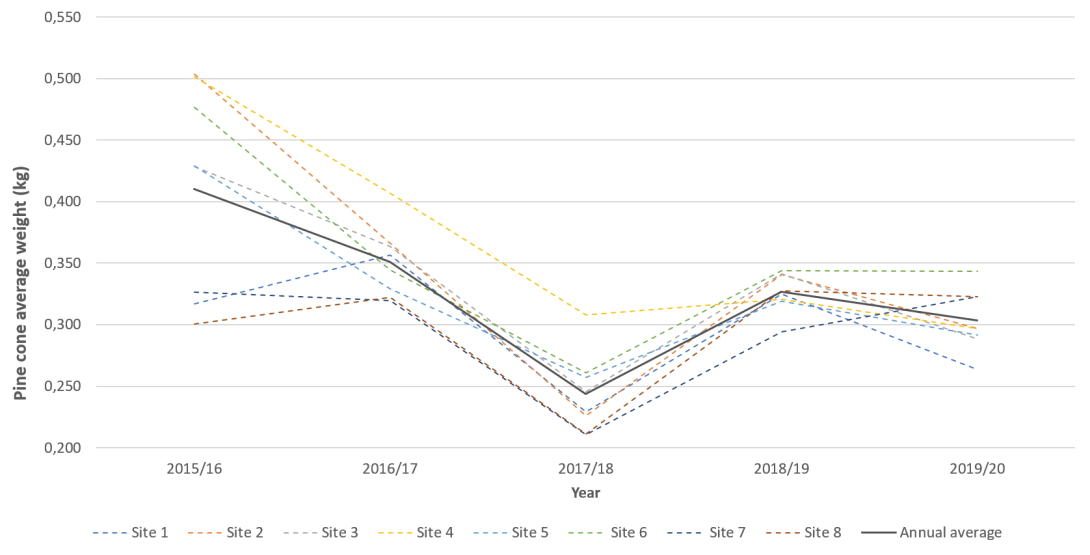
Objective:
This factsheet aims to highlight the interannual variation of the pine cone dimensions and present some factors that explain it, in order to contribute for the future establishment of silvicultural measures than can lead to a decrease in that variation, by promoting the conditions for bigger pine cones or selecting more suitable Forest Reproduction Materials (FRM) .
Context:
The amount of pine cone traded is determined not only by the number of pine cones obtained, but also by their weight. For all those who commercialize, the high annual heterogeneity of pine cone production is not a surprise. The average weight of the pine cone varies from year to year, usually referring to the value of 300 g / pine cone (fresh weight).
Climatic factors and the characteristics of the stands influence the production of pine cones and the number of pine nuts / pine cone. In the latter case, the density (number of trees / ha), the age of the pines and the quality site indexes of each location are some of the parameters of the stands considered most relevant.
Contacts:
Conceição Santos Silva, mcsilva@unac.pt, http://www.unac.pt/